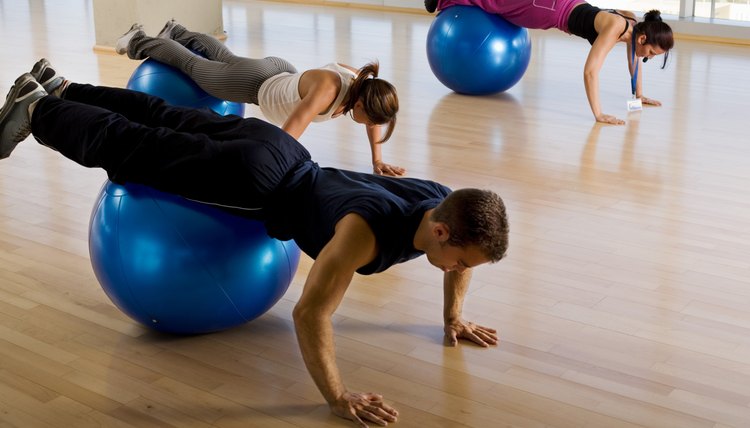More Articles
Substitute for Roman Chair Exercise

The Roman chair comes in many variations and styles, but the basic design includes someplace to hook your feet or ankles and a pad for your hips. Depending on whether you use it in a back-lying, front-lying or side-lying position, you can give your abs, obliques or back, butt and hamstrings an intense body-weight resistance workout. However, it's not for everyone. You'll need a pretty strong core to begin with to avoid back strain with ab work, and while the front-lying position allows greater range by starting with your hips flexed, the head-down position can be uncomfortable, while the position of the pad can exacerbate stomach problems, like acid reflux. Not to worry. There are plenty of effective substitutes.
Back Extensions
The much-neglected erector spinae that run up and down your back are essential for good posture, opposing your ab muscles to keep your middle back from rounding. Roman chair exercises for back muscles can be replaced with the back extension machine at your gym, front-lying supermans -- lifting shoulders and hips at the same time -- on a mat or birddogs done by extending the opposite arm and leg from a hands-and-knees position. Partial supermans on a stability ball, where you leave your feet on the ground and lift only your upper body, closely simulate the Roman chair exercise. Warning: if you're passing on the Roman chair because it churns your stomach juices, skip the supermans on the ball.
Glutes and Hamstrings
Leg presses, squats and lunges work your quads as well as your hamstrings and glutes, but if you're looking for something more in line with Roman chair exercises, try lower back extensions. Lie face-down on a mat, resting your chin on your hands. With your legs extended and just about hip-width apart, concentrate on squeezing your butt muscles to lift your legs and hips -- ever so slightly -- off the floor. Try a similar exercise with a stability ball by placing your hands on the floor -- arms extended -- and your hips on the ball. With your legs extended, start with your feet on the floor, then squeeze your glutes to lift your legs off the floor.
Abs
Working your abs with your hips on a stability ball provides almost the same challenge as a Roman chair in that you'll already be defying gravity in the starting position, as your back will not be supported. Or you can do crunches on a declined bench, requiring a greater range of motion. Add a challenge to both these exercises by holding a medicine ball just slightly above your chest while you crunch up, then thrust the ball out in front of you, giving it a short toss and catching it before you roll down.
Obliques
As with regular Roman chair crunches, Roman chair crunch twists require muscle work before the move even begins, so to increase the challenge on a stability ball, try holding a weight plate in front of your chest. You can also do this on a declined bench. Then try lateral lifts over a stability ball. Lying on your side with the ball at the bend of your waist, anchor your feet against a wall, then lift yourself laterally. Similar to doing these on a Roman chair, this exercise works not just your obliques but the deeper quadratus lumborum.
References
Writer Bio
Nancy Cross is a certified paralegal who has worked as an employee benefits specialist and counseled employees on retirement preparation, including financial and estate planning. In addition to writing and editing, she runs a small business with her husband and is a certified personal trainer with the Aerobics and Fitness Association of America (AFAA).
